Matsumoto is a compelling alternative to Japan’s major tourist destinations.
Soaring against a backdrop of the snow-capped Japanese Alps, Matsumoto Castle is its crown jewel. Unlike many Japanese castles rebuilt after World War II, it stands much as it did during the samurai era.
Beyond the hulking 16th-century fortress, this welcoming city has fabulous contemporary art galleries and streets with traditional merchants’ houses. Locals still gather at ancient wells that have served the community for centuries
One day in Matsumoto is enough time to visit its famous castle and more besides. Whether you are staying overnight or visiting for a day trip, my itinerary will help you have the best visit.
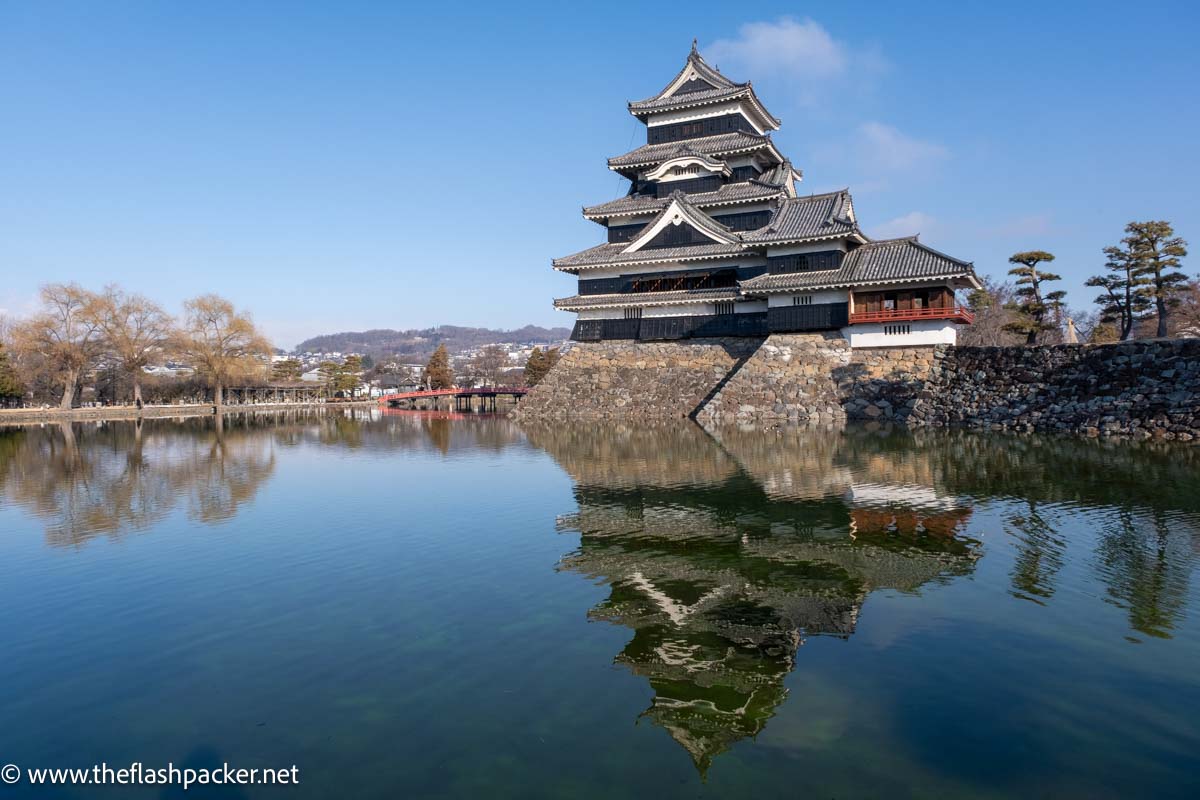
Some articles on this website contain affiliate links. This means that I may earn a small commission if you make a purchase through these links. As an Amazon Associate, I earn from qualifying purchases. Read the full disclosure here.
How I Did It
As part of my winter Japan itinerary, I spent two nights and one day in Matsumoto, staying at the Matsumoto Marunouchi Hotel. After spending two days in Takayama, I arrived by bus, a spectacular journey across the Japanese Alps. I then caught a train to Nagano City to see the Snow Monkeys.
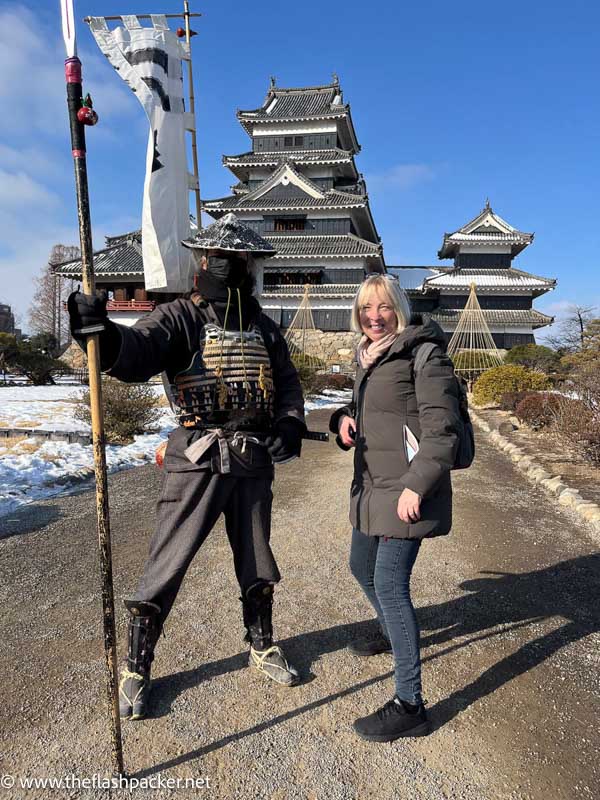
1-Day Matsumoto Itinerary
I covered all of the sights in this suggested itinerary in one day. Matsumoto is a compact city and easily explored on foot.
Matsumoto Castle (Matsumoto-jō)
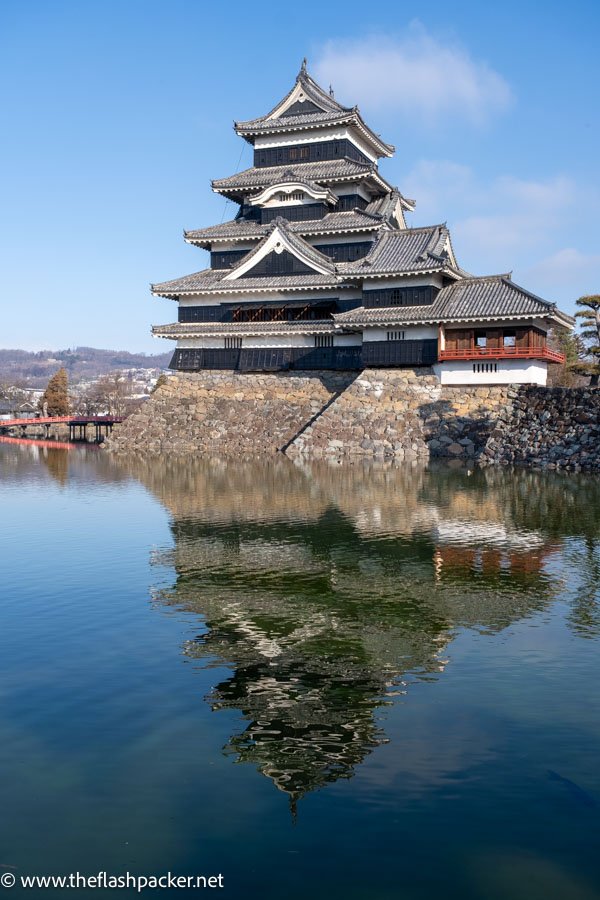
Start your day at Matsumoto Castle, Japan’s oldest castle and one of four castles designated national treasures (the others are Himeji, Hikone and Inuyama). It is also known as Crow Castle (Karasu-jō), thanks to its striking black-and-white turreted main keep (donjon).
Foot soldiers welcome you to the castle and will happily pose for photos.
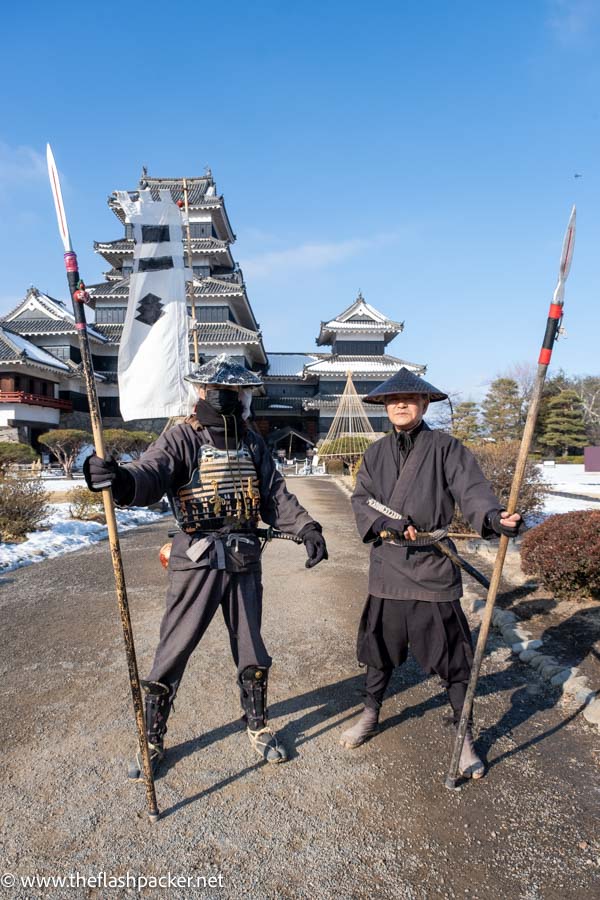
- Arrive when it opens at 8:30 am to avoid crowds
- Try to avoid visiting during Golden Week and in mid-August (Obon holiday) when it gets very busy
- As you need to remove shoes before entering, bring easy slip-off footwear
- Wear thick socks if you are visiting Matsumoto Castle in winter. My toes were frozen!
Inside, you access the castle’s levels via wooden stairways and step ladders, which can be slippery. But your effort is rewarded by the views and historical displays on each level. I loved the Moon Viewing Pavilion (tsukimi yagura).
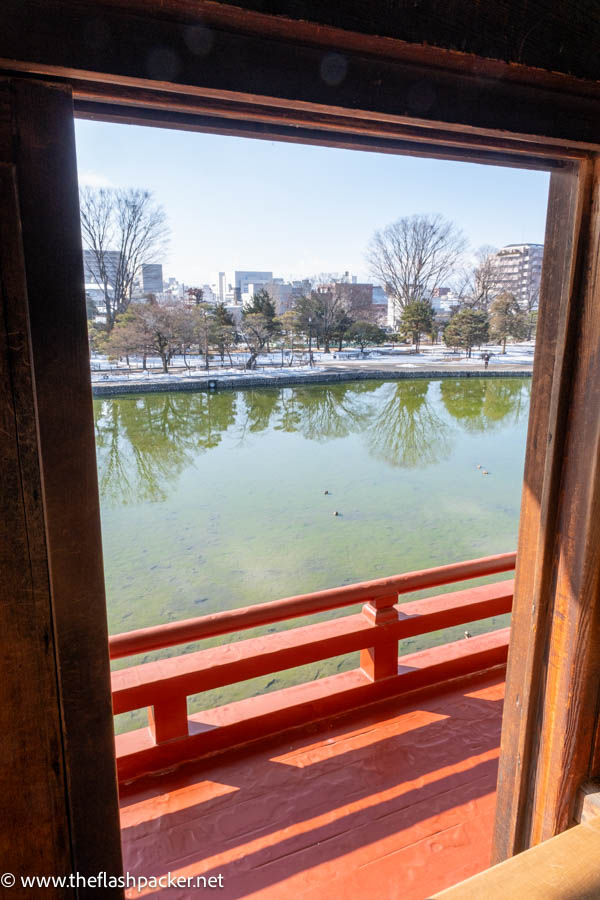
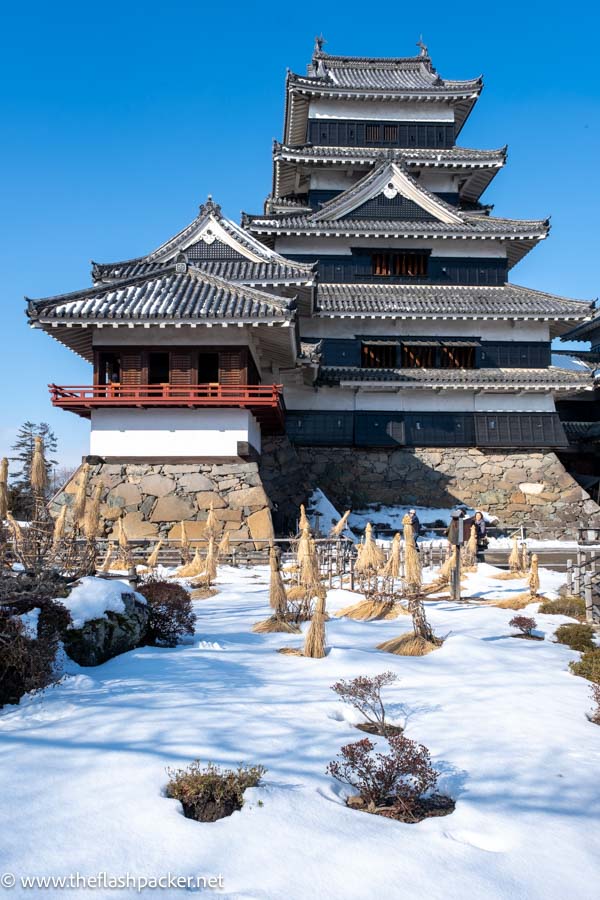
Matsumoto Castle is open from 8.30 am to 5 pm daily (extended during the Golden Week and in summer) and you can check opening hours and ticket prices here. Allow at least an hour for your visit.
Although I didn’t use them, a local volunteer organization offers free guided tours in English. Find out more at the Guide Station at the entrance to Matsumoto Castle Park.
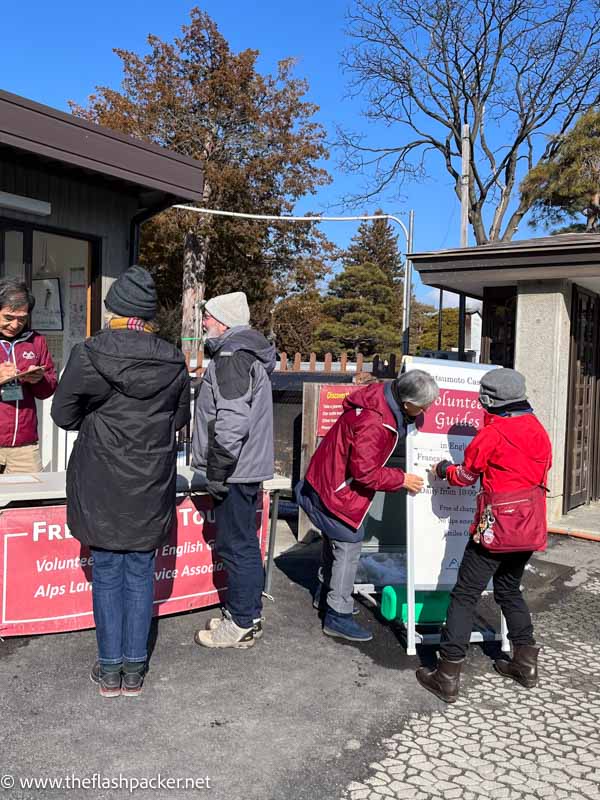
Matsumoto City Museum
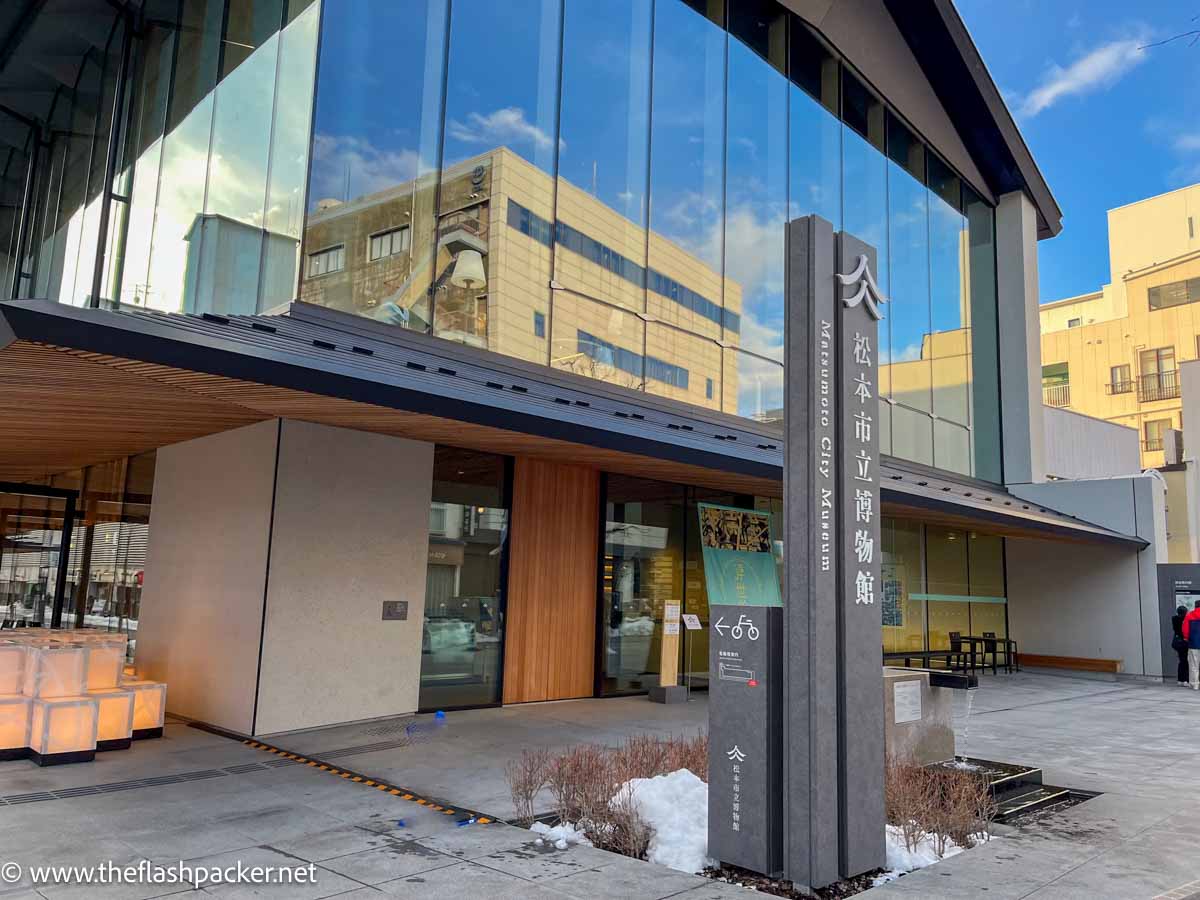
After the castle, it’s well worth popping into this lovely museum (not to be confused with the Matsumoto City Museum of Art). It celebrates the city’s historical and cultural heritage through artefacts from across the region.
When I visited, a lovely volunteer guide took me around a fabulous ukiyo-e exhibition and even gifted me origami as a memento. Entry is free.
Yohashira Shrine

Built during the Meiji Period (1868 to 1912), this peaceful shrine is dedicated to four Shinto deities. This is rare, even in Japan, and is said to bestow the building wish-granting properties.
The name Yohashira means “four pillars.” This a popular place to visit during the sakura season.


Nawate Street (Nawate-dori)
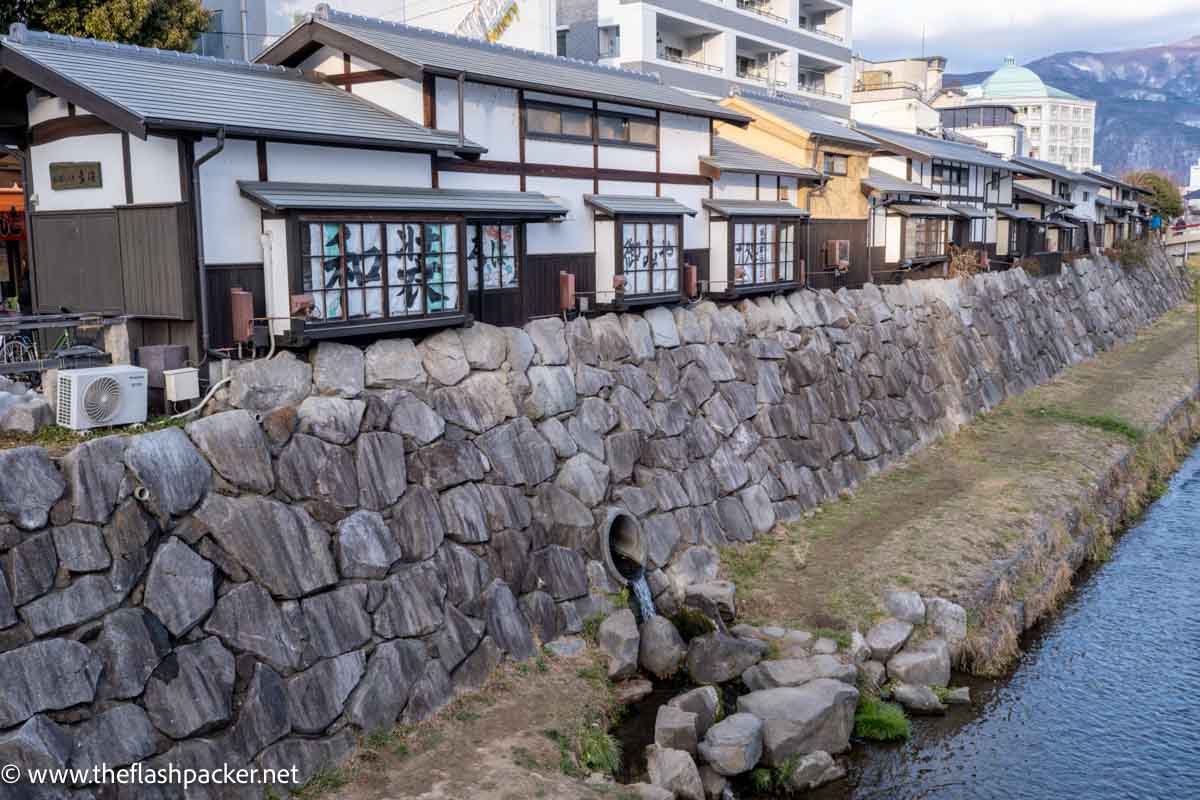
Flanking the Metoba River and lined with small shops and cafes, this shopping street is also known as Frog Street.
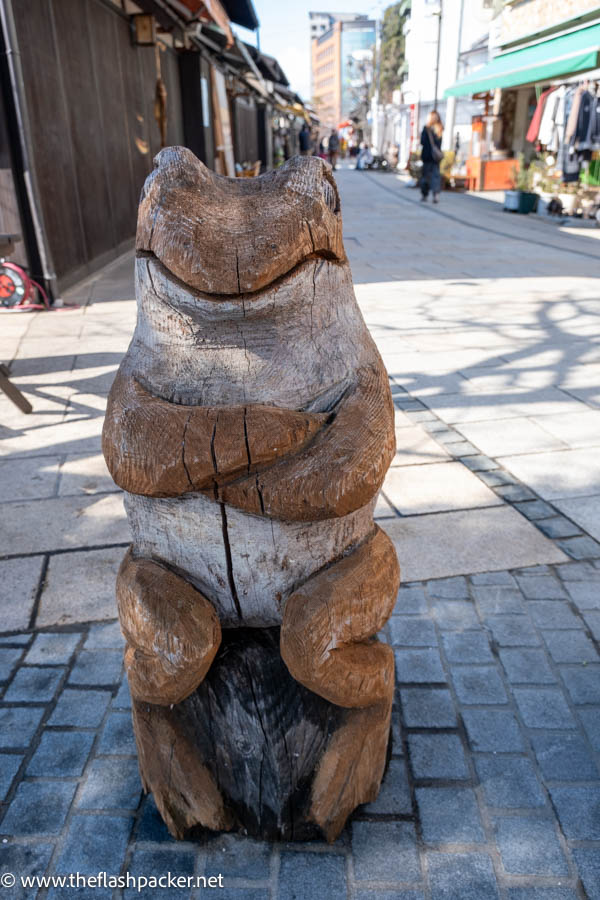
Although the frogs that populated the river were wiped out by a devastating flood in 1959, slightly naff frog statues make sure the locals don’t forget them. The famous statue of sword-wielding frogs near the bridge is considered a symbol of good fortune.
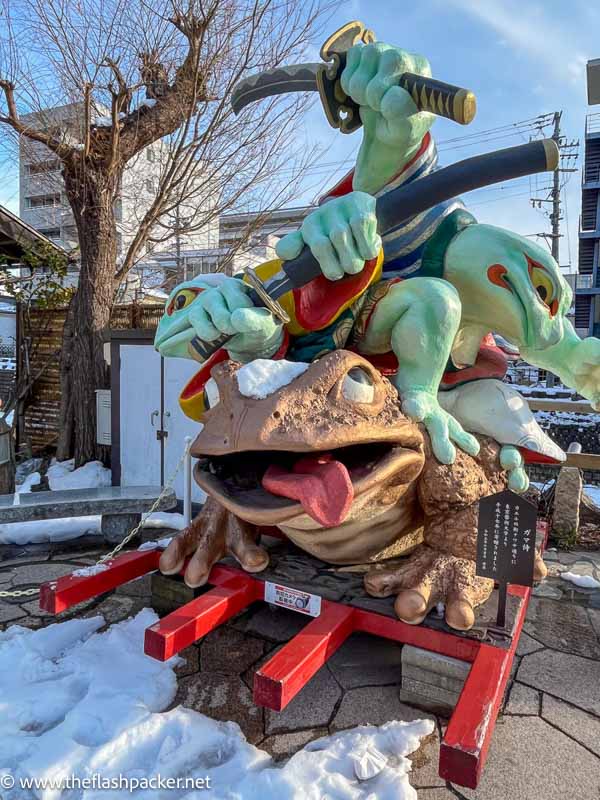
Make sure you stop at Taiyaki Fukusato for their fresh taiyaki (fish-shaped pastries filled with sweet red bean paste).
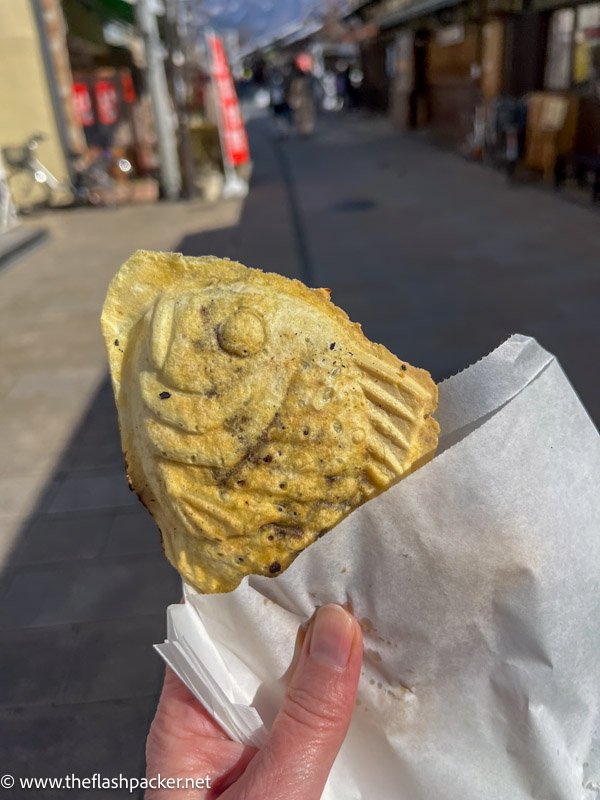
Nakamachi Street (Nakamachi-dori)
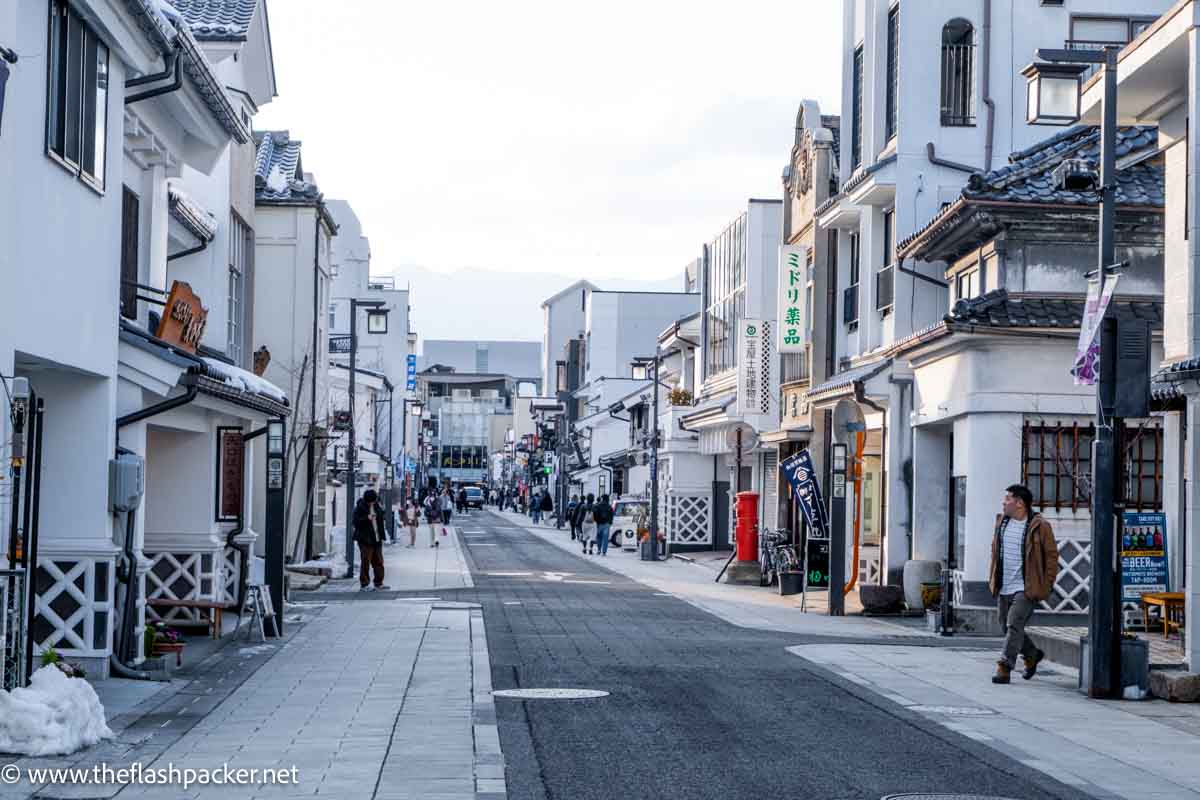
Begin your afternoon in Nakamachi, the former merchant district. The main street has kura, traditional storehouses with distinctive white and black walls. Many now house cafes, craft shops and galleries.
Takasago Street (Doll Street)
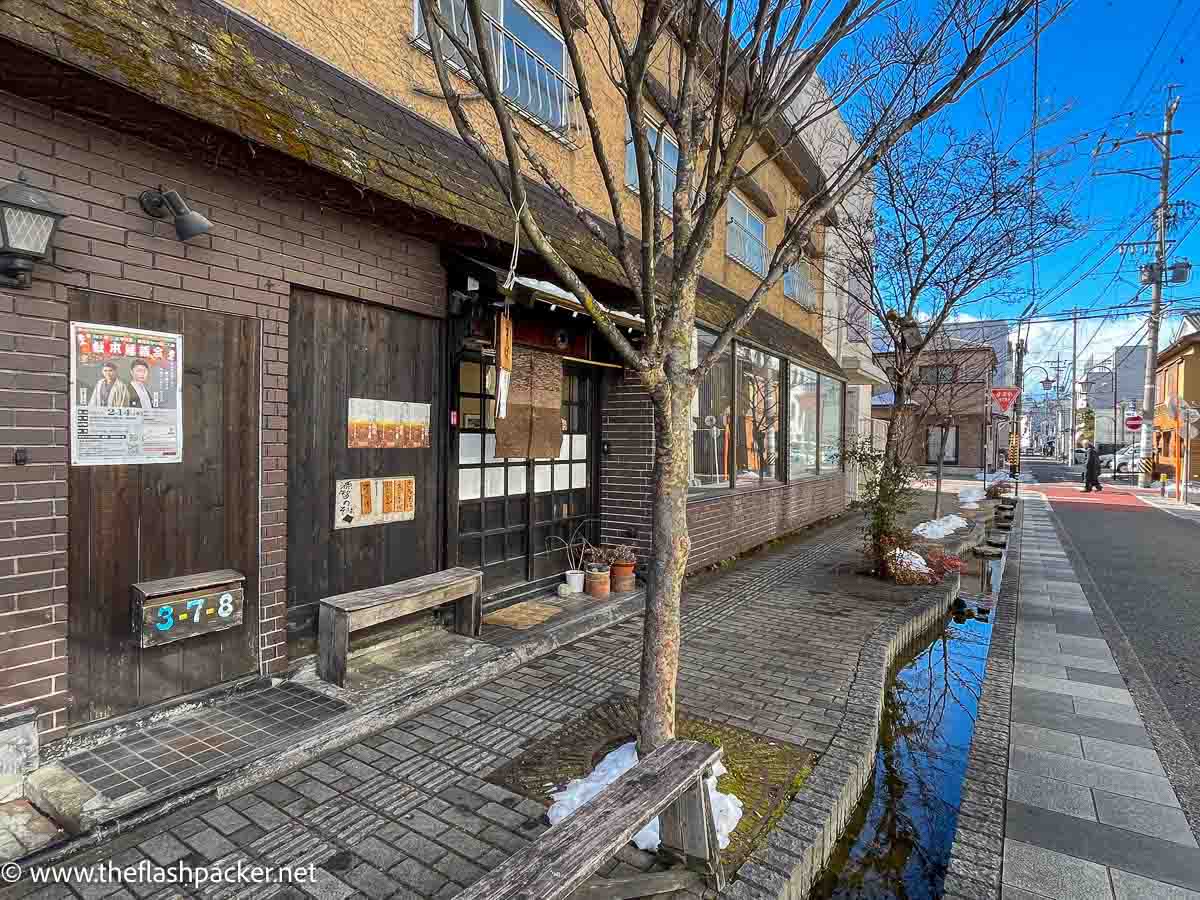
Also known as Ningyo-Cho Street, this narrow road is famous for its shops selling traditional Japanese dolls. These exquisite pieces of art will blow a hole in your holiday budget but the owners are happy for you to browse.
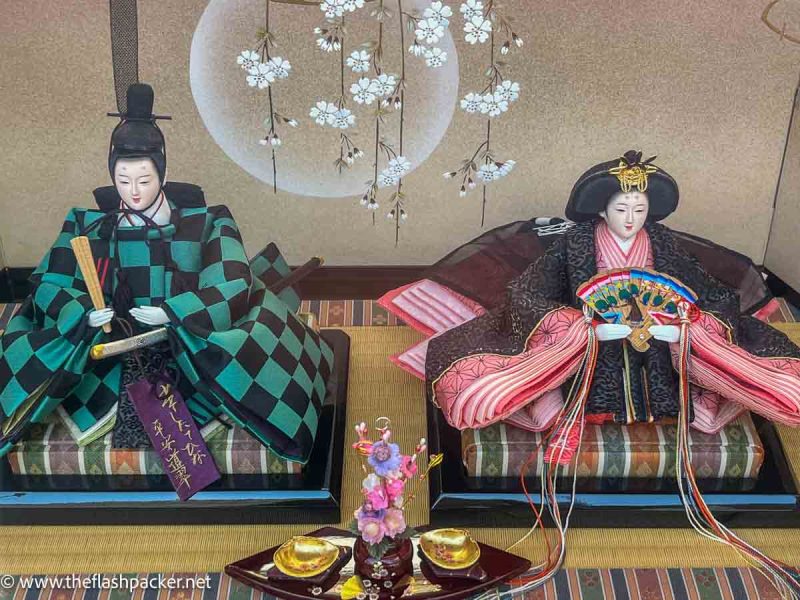
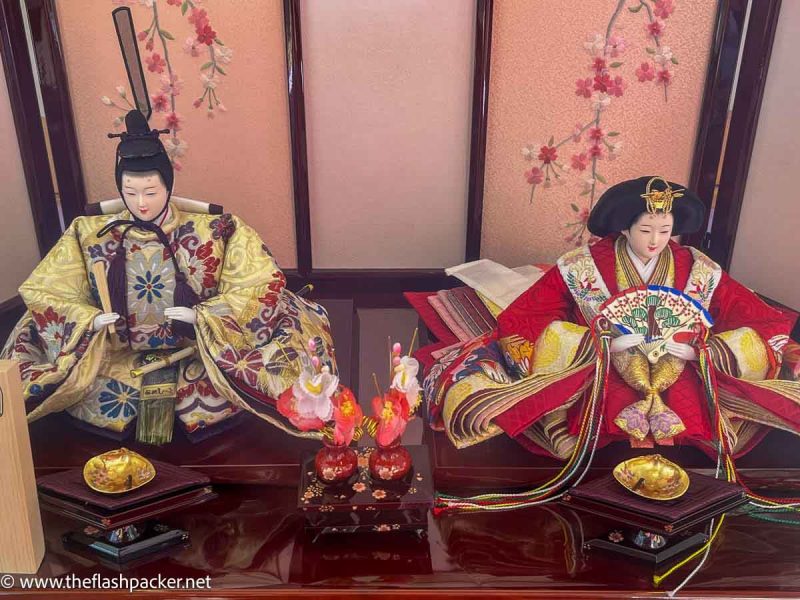
Genchi Well
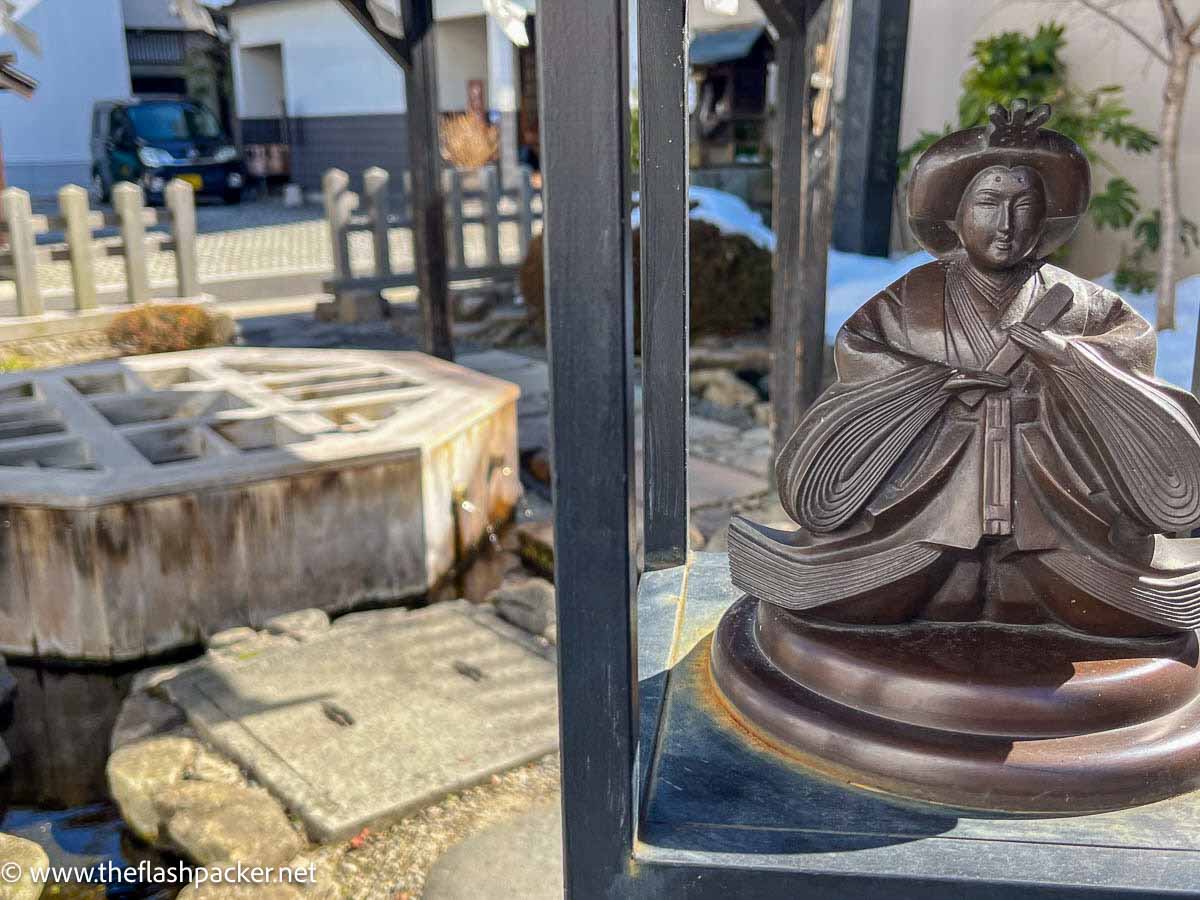
Taking advantage of an abundant supply of groundwater, Matsumoto is dotted with wells and fountains. The most famous is the Genchi Well which has kept its citizens hydrated since the Edo period.
Ryuko-ji Temple
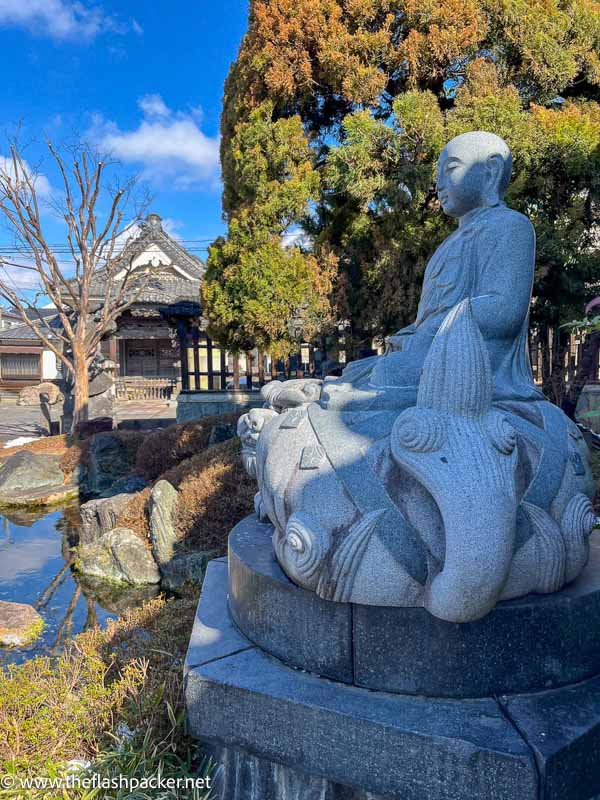
I stumbled upon this lovely little temple by accident. Although I couldn’t find out much about it, it was a serene spot to stop and rest.
Fukashi Shrine
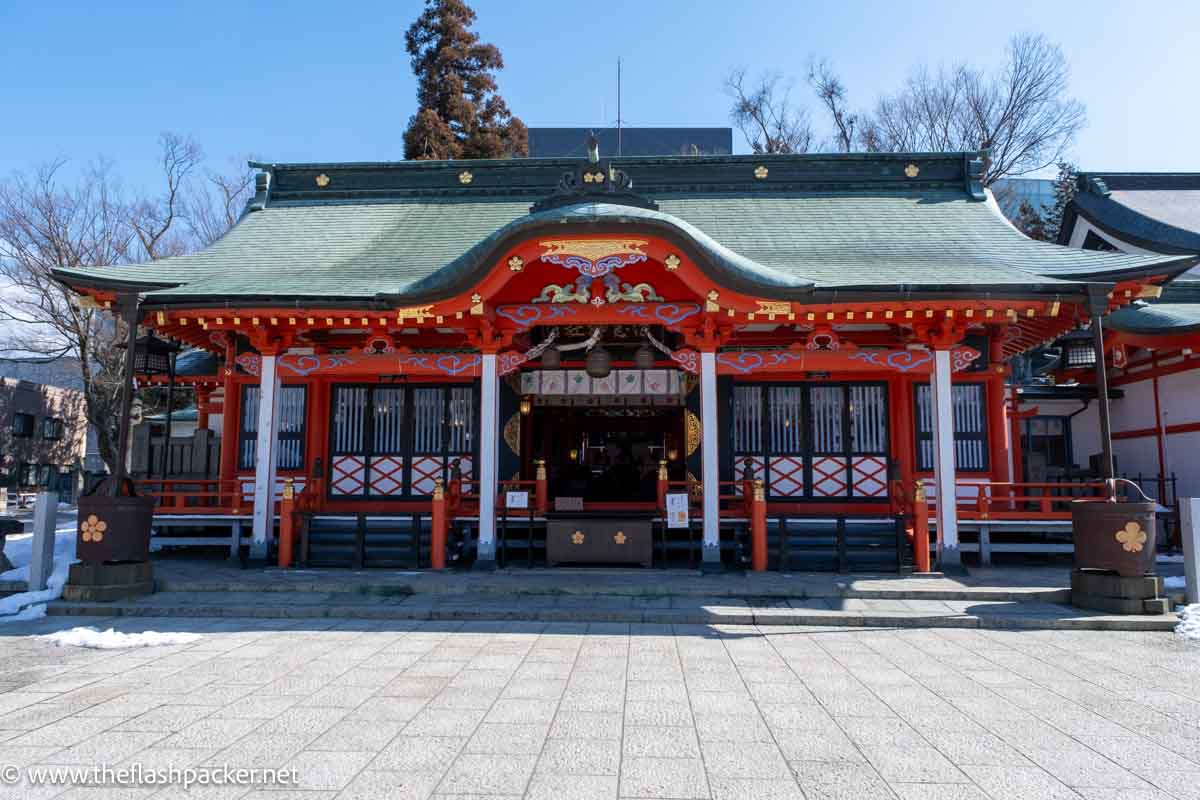
This beautiful shrine is dedicated to two Shinto deities, Tenjin (a deity of scholarship) and Suwamyojin (a deity of wind, water, agriculture as well as hunting and warfare). The Tenjin deity lends his name to the Fukashi Shrine’s most famous festival, the Tenjin Matsuri.
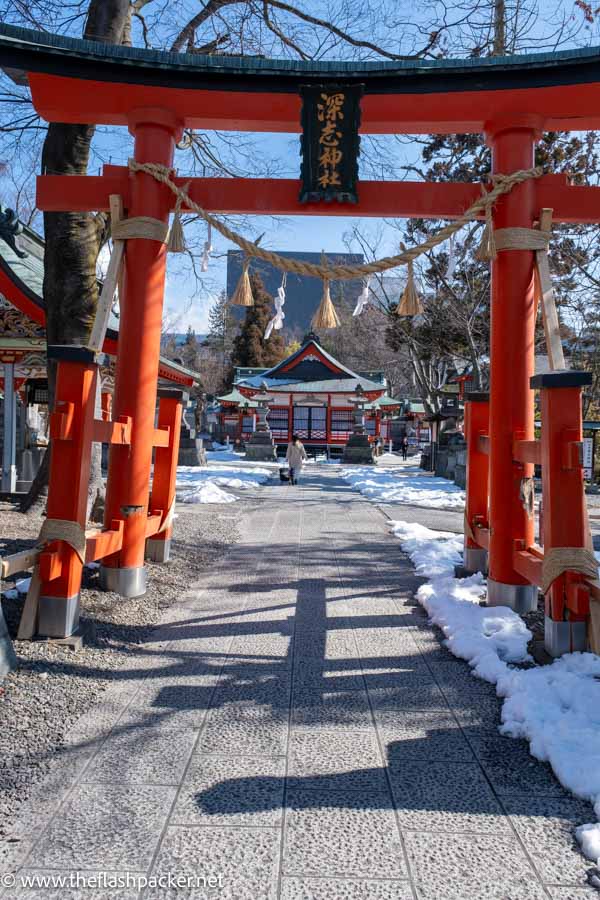
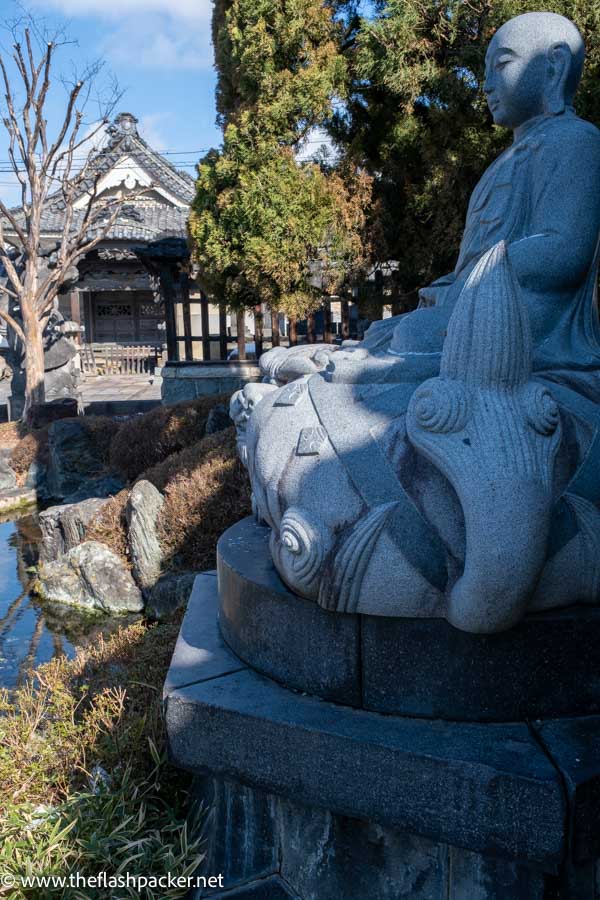
Matsumoto City Museum of Art
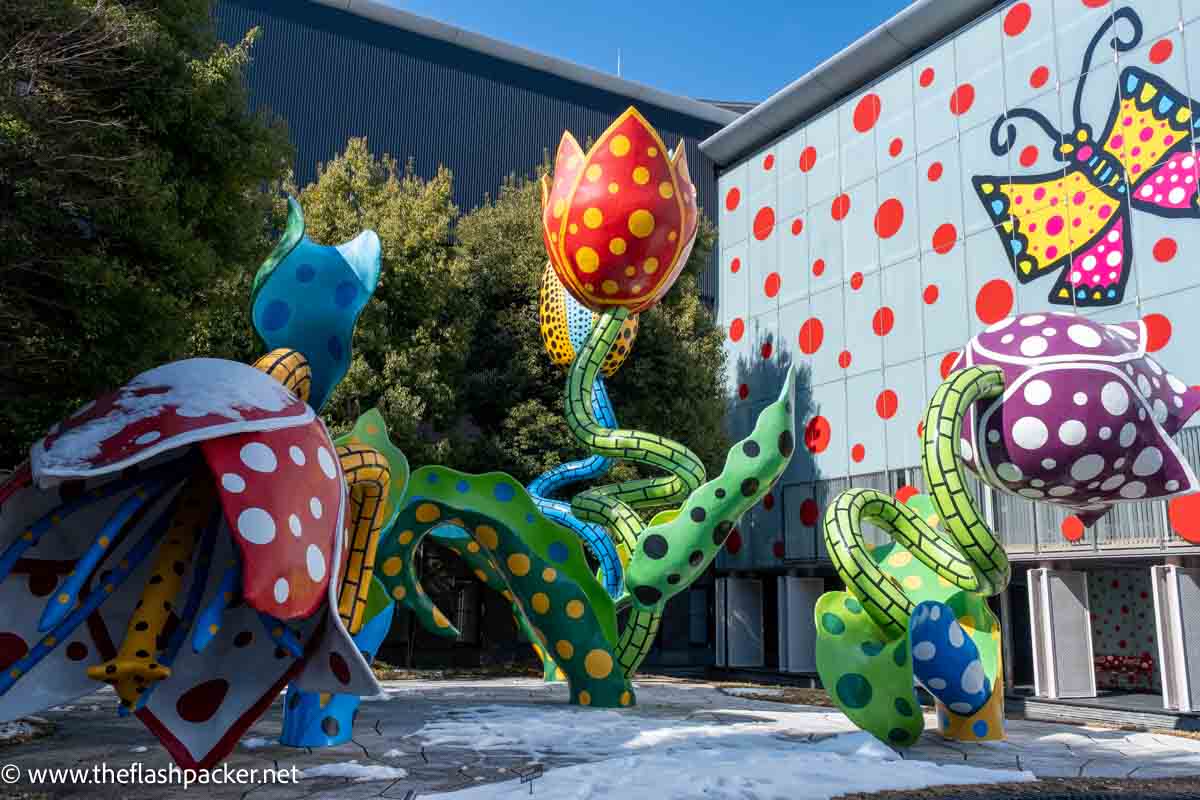
I’ve loved the work of Yayoi Kusama since her exhibition at London’s Tate Modern. Fondly known as the “princess of polka dots”, she works with different media but they have one thing in common: dots.
She’s a Matsumoto homegirl made good and there’s a permanent exhibition of her work at the Matsumoto City Museum of Art. It’s extraordinary stuff and well worth the small entrance fee. You’re not allowed to take photographs except for the Great Gigantic Pumpkin.
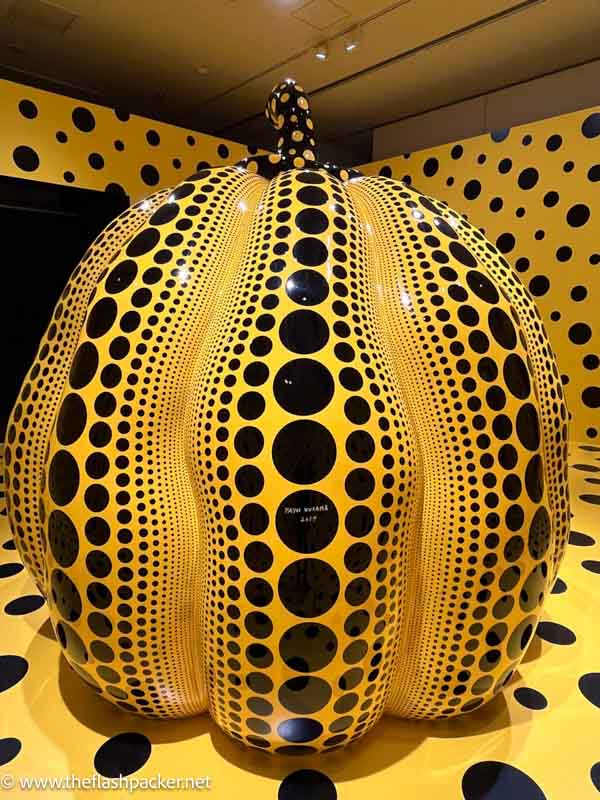
As darkness falls, return to Matsumoto Castle. Winter illuminations are big in Japan and one of the best light shows takes place at the castle.
It is spectacular. The illuminated castle reflects off the surface of the moat, creating a hypnotic mirror effect, the light projections synchronised to music.
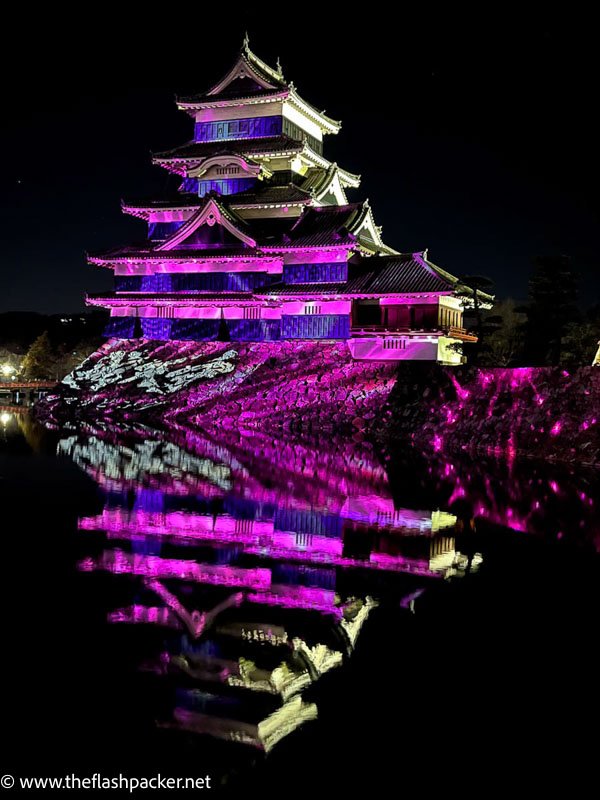
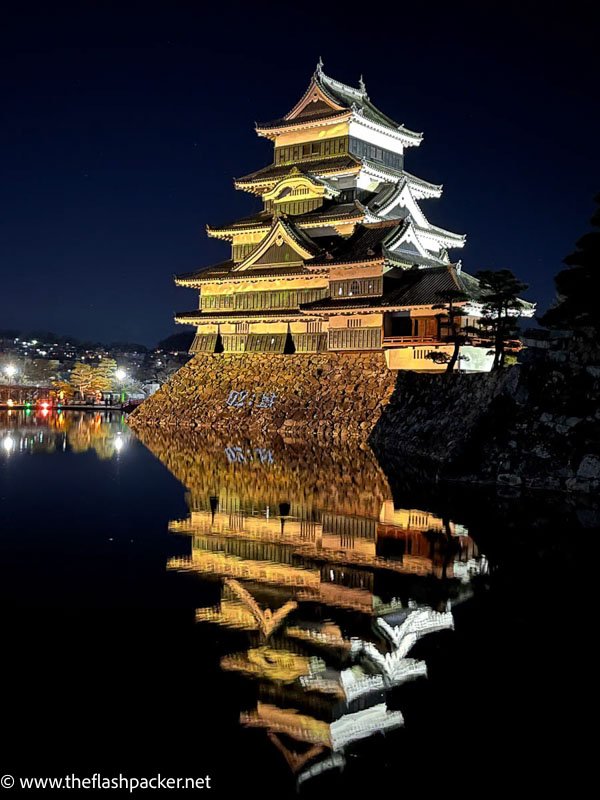
This sound and light show takes place December – February between 6 pm and 9 pm. Admission is free.
Finish your day with dinner at Okina-Do. Occupying a restored traditional building, this family-owned Japanese “western-style” diner has been around since 1933. I feasted on fabulous slow-cooked beef with rice.
How to Get to Matsumoto
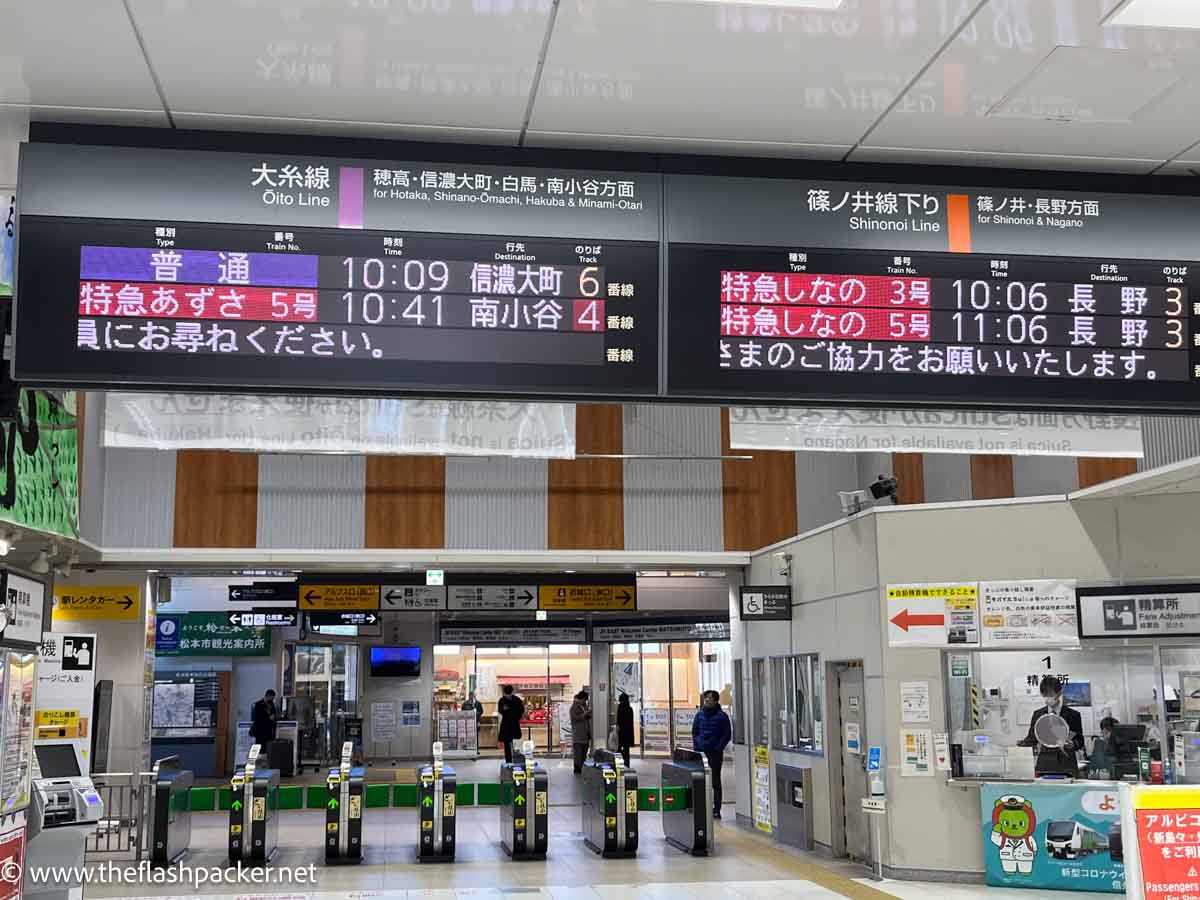
All of these journeys are covered by the Japan Rail Pass. To decide if this could be good value for you, check out my JR Pass review.
Where to Stay
I enjoyed my stay at Matsumoto Marunouchi Hotel, particularly breakfast in a grand ballroom with chandeliers. Some of the more expensive rooms have castle views.
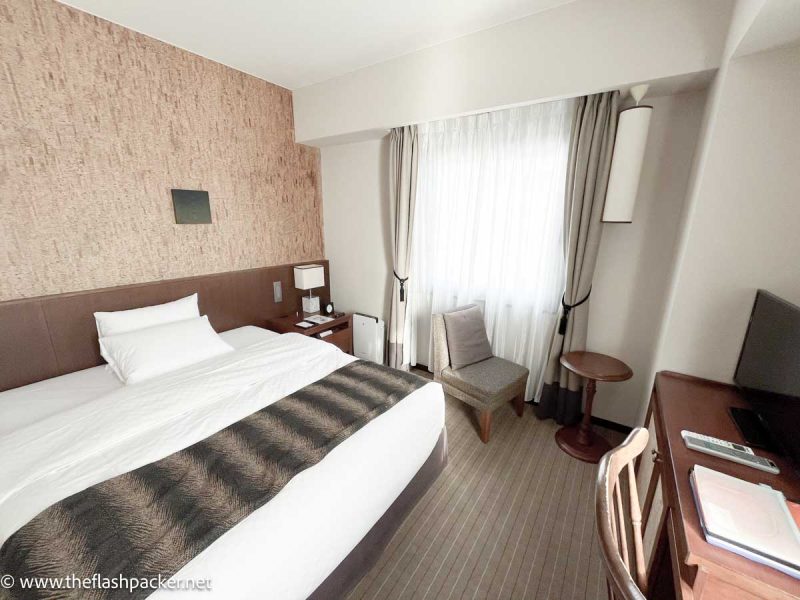
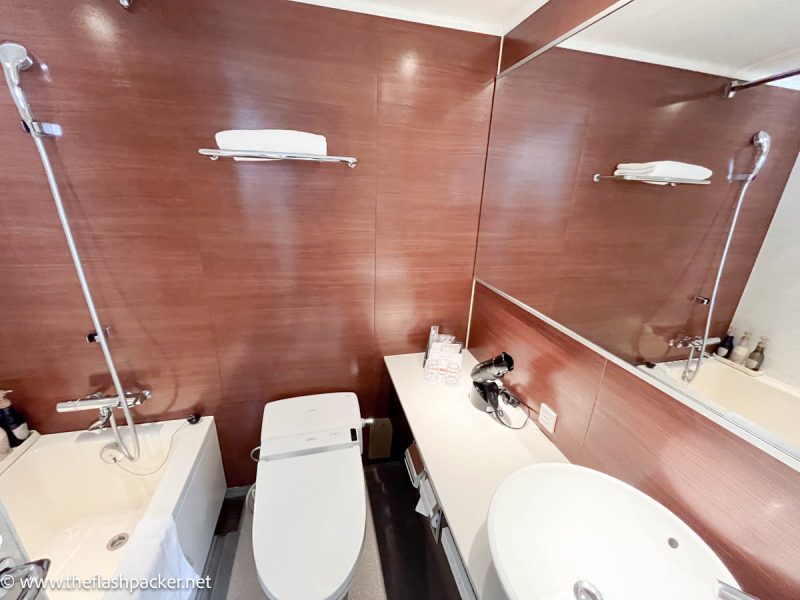
If this doesn’t meet your needs, take a look at Onyado Nono Matsumoto Natural Hot Spring or Mitsubikiya which have been highly rated by other travellers.
And that’s a wrap!
I was on the fence about visiting Matsumoto but was so glad I added it to my itinerary. Aside from its show-stopping castle, it’s an understated, cosmopolitan city with pretty streets and endearing views without overwhelming crowds.
But if you are looking for alternative nearby destinations consider the following:
Happy travels!
PS. If you’ve found this Matsumoto guide helpful, Pin it to read later!
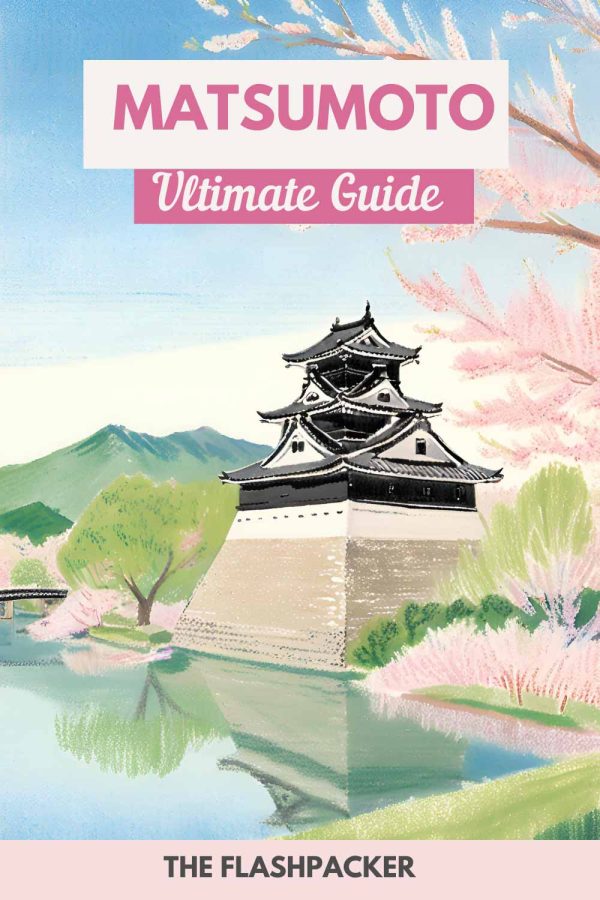
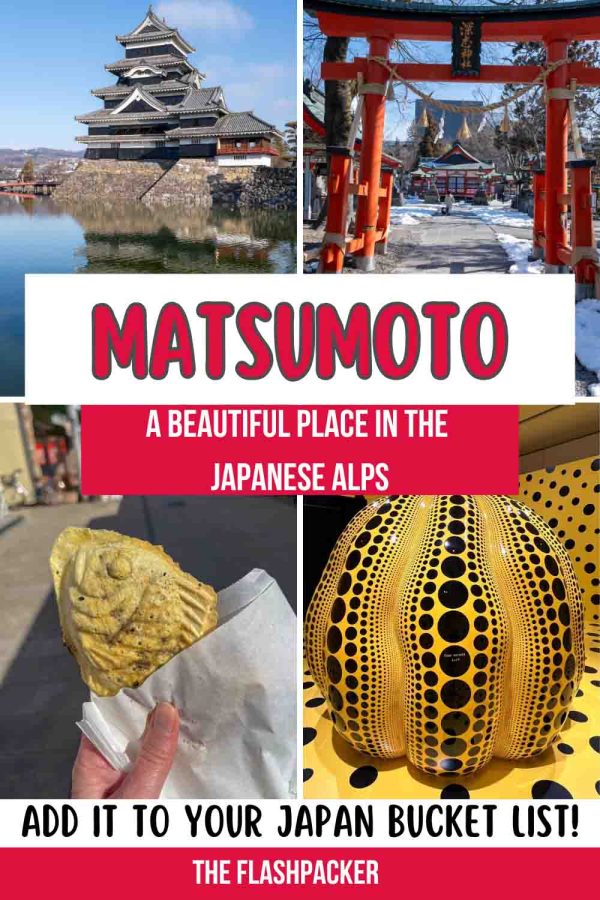

About Bridget
Bridget Coleman has been a passionate traveller for more than 30 years. She has visited 70+ countries, most as a solo traveller.
Articles on this site reflect her first-hand experiences.
To get in touch, email her at hello@theflashpacker.net or follow her on social media.
